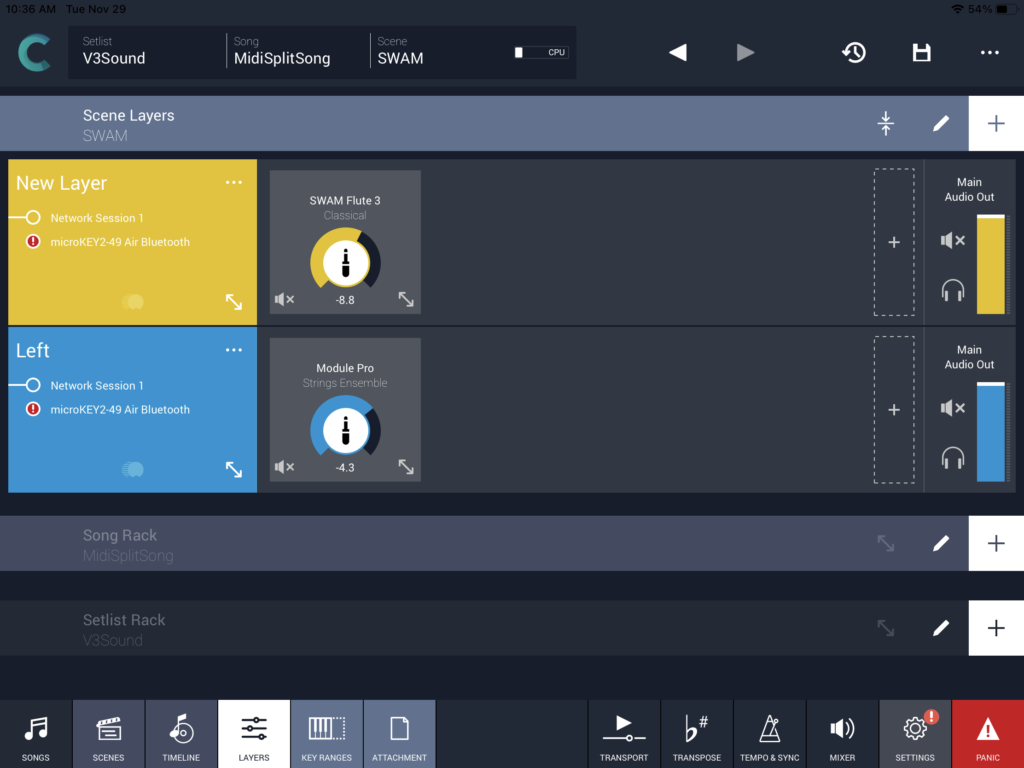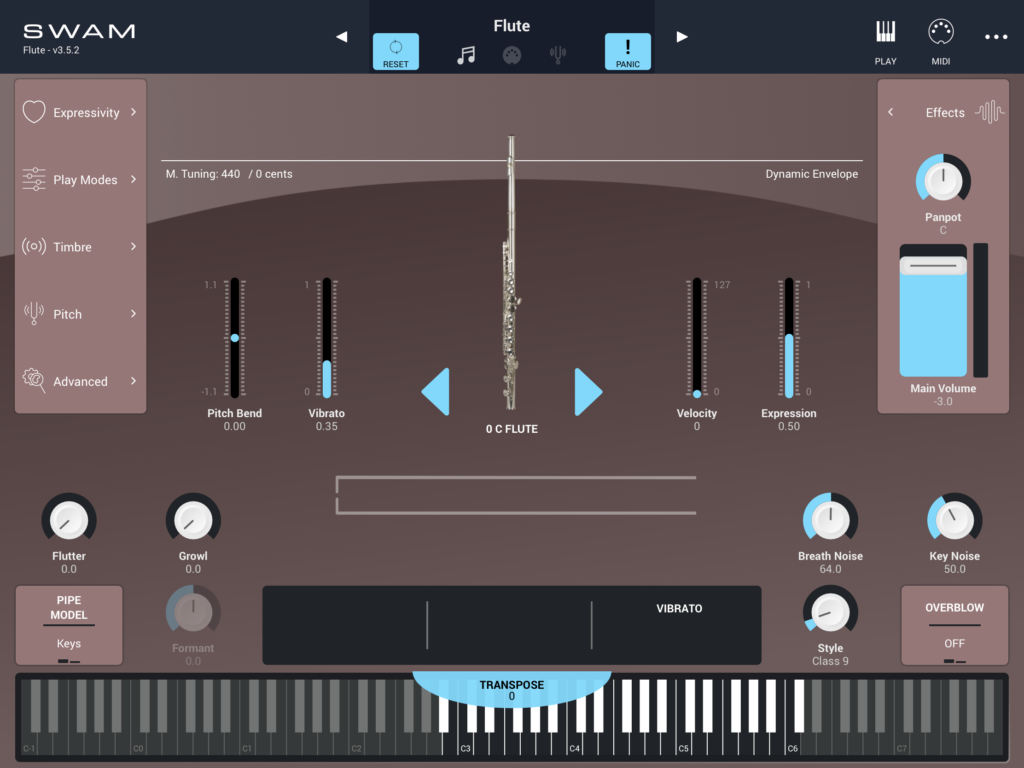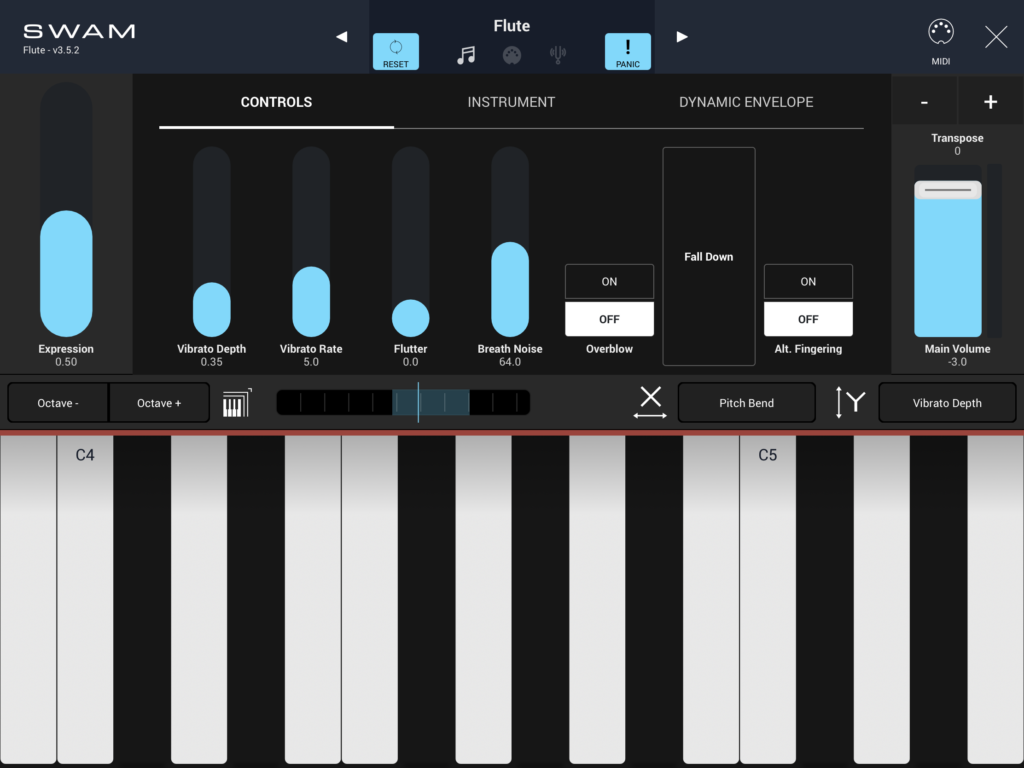I hope you took advantage of Audio Modeling’s Black Friday sale. I took the plunge and bought Camelot Pro and SWAM Flute for IOS. Why did I wait all these years? 🙂
Camelot Pro (IOS)
Obviously, I’ve only been working with Camelot Pro for a short time. However, I now get why many iPad musicians are into it. Camelot Pro is feature rich including an audio player, music score reader, etc. I’ll get into those features someday. My primary purpose now is a smart MIDI-routing host for software and hardware instruments.
My first experiment was a split and dual layer combi for the V3 Sound Yammex module. Camelot Pro comes with many pre-defined patch maps for popular instruments like the Yamaha MODX. Since the V3 Yammex is a niche product, Yammex ain’t lucky enough to have a pre-defined map. With a little menu digging, I found the Bank Select and Program Change parameters for each patch for the split and layer. With a little more menu digging, I found sliders for bread-and-butter patch parameters like cutoff and resonance, reverb send, and so forth.

My second experiment was a split and dual layer combi for SWAM Flute and Korg Module. Having the first experiment under my belt, it was much easier to set up the software instruments. Double-tapping a software instrument box gives access to patch selection.
I sometimes use a wired Arturia Keylab Essential and other times I play a Korg Microkey Air wireless. So, one needs to pay attention to the MIDI connection status icons in a layer in order to re-enable any missing connections. In the example above, please note the missing Microkey Air connection.
Not bad. My main quibble with Camelot Pro is Audio Modeling’s exaggerated claim of an intuitive interface that doesn’t need a manual. No, you do. At the very least, watch the Camelot introductory video and browse the on-line documentation.
No matter what your marketing people claim, don’t ever say your interface is so intuitive it doesn’t need documentation. This is the most idiotic remark a software engineer or vendor can make. I failed students for less…
In order to use Camelot Pro, you need to understand the structure and relationship of songs, scenes and layers — at the very least. You also need to know how to add instruments and change key ranges. Yep, the graphic controls are nicely done — once they are found and exposed.
Here’s another instance when the on-line documentation was helpful. I didn’t know that you could create your own user patch maps! If I continue to use Camelot with the V3 Sound Yammex XXL, I will surely create a map containing the twenty or so favorite Yammex patches. On the up-side, Camelot Pro has enough capability and parameter tweaking power to ditch my MIDI Designer user interface (UI) and just go Pro.
SWAM Flute (IOS)
If you want to get your Herbie Mann or Brian Jackson on, you need one of these. SWAM Flute comes up configured as a jazz flute and, wow, is this thing expressive.

Be sure to hit the PLAY icon and play the flute using SWAM’s on-screen controls. Swiping left/right and up/down are probably as close as us cheapskates will get to a Roli experience. 🙂 I like the articulation status display which indicates legato, detached, etc. It’s a good tool for learning on-screen gestures.
Then dive into the advanced parameters through the tabs. There are a number of fun toys hidden in these treasure boxes. Growl! Flutter! Falls! Oh, my gosh, this is sweet!

After all of that excitement, hooking up to the Arturia Keylab Essential felt like a let-down. The flute still sounds darned good — among the best one can find in a hardware synth. But, I misses all of the fun on-screen articulations. There is solace in the MOD wheel which adds spot-on vibrato. With the snow beginning to fly, it’s time to put those Arturia knobs and sliders to work…
The SWAM flute is a beautiful solo instrument. This is true of all current SWAM instruments. Ensembles are a DIY affair and, unfortunately, the individual solo instruments are pricey. Putting together a woodwind section will set you back a pretty penny. So, I will await SWAM ensembles because they are my primary need and I’m cheap.
On the other hand, if you need a few instruments for exposed solos, definitely give Audio Modeling SWAM a try. I don’t regret buying SWAM Flute (IOS) as it is fun to play and it opens the door for advanced, expressive control. WX-11?
Copyright © 2022 Paul J. Drongowski
